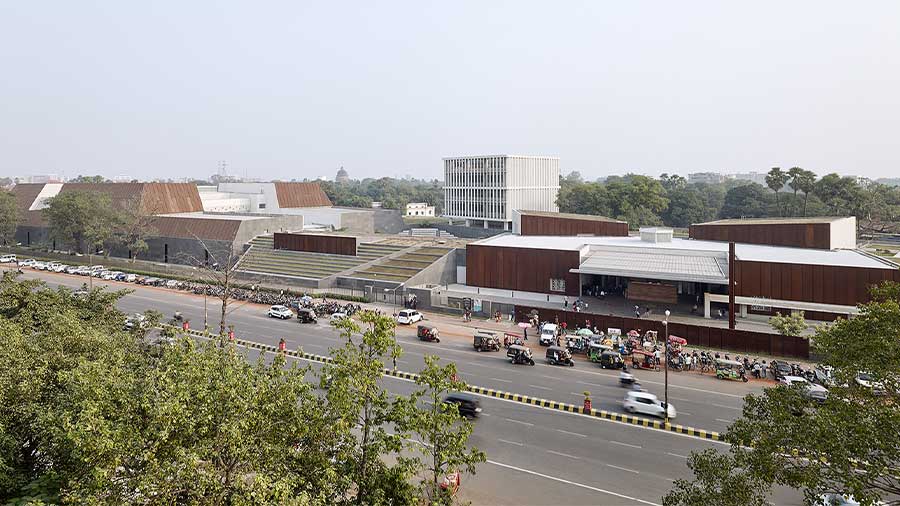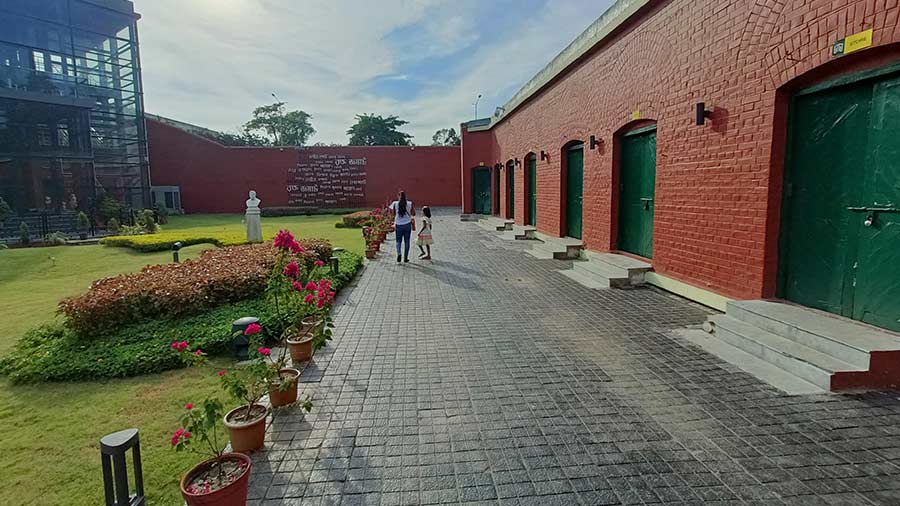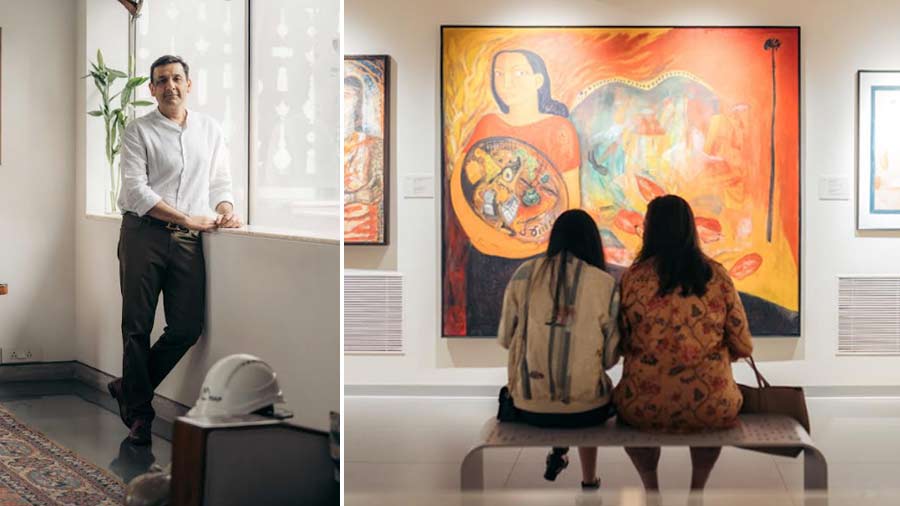“Bihar? Bihar has a museum that hosts a biennale? Who knew!” This is the most common response I hear when I speak of Bihar Museum and its pioneering work. Admittedly, Bihar has traditionally not been on the radar of museum buffs and art enthusiasts, despite it being a hotbed of archaeological exploration for over a century, its remarkable finds housed in museums in India and abroad.
Since 2015, Bihar has been home to one of the best museums in India – spearheaded by the state government, no less. And this year, it is hosting the second edition of the Bihar Museum Biennale – the world’s first biennale that brings together museums, art professionals and art lovers on a common platform.
A museum for Bihar?
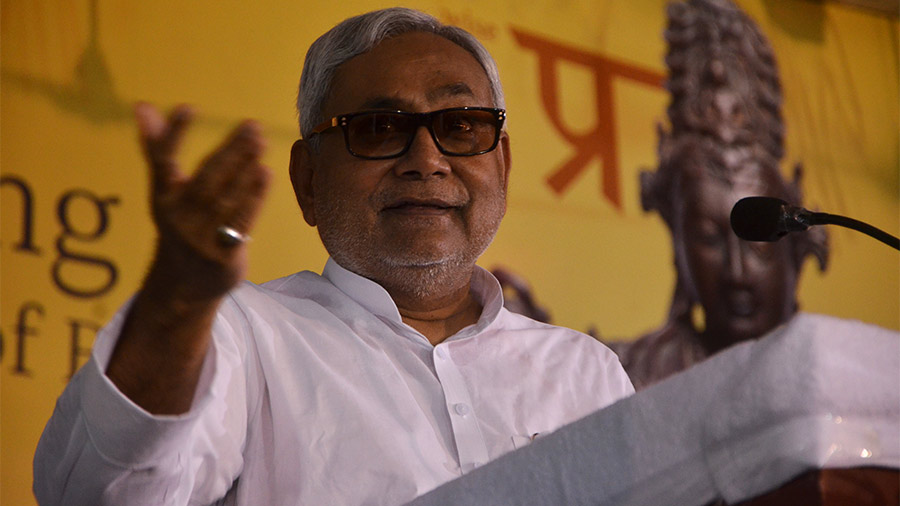
Bihar CM Nitish Kumar speaks during the museum’s inauguration, in 2015
To appreciate Bihar Museum Biennale’s ambition, it is important to recognise the institution’s compelling vision and indeed, audacity. 13.5 acres and Rs 500 crores for a museum in Bihar? Money that could be better used for development? Pearl clutching commenced in various quarters when the project was announced, but the state’s leaders and bureaucrats persisted. For them, it was never a binary dilemma, a matter of this (arts) or that (development) – both could be possible in one place.
And why should Bihar – a region where the Buddha attained enlightenment, home to ancient monasteries, a coveted Mughal subah, site of Gandhi’s first Indian political movement, birthplace of revolutionary freedom fighters and now, ranked second among states with the highest number of IAS officers – not dream of a modern, state-of-the-art museum for its people? As Bihar Chief Minister Nitish Kumar said on museum’s opening day in 2015: "We Biharis have a hunger for knowledge- we want to know. We have curiosity and enthusiasm. That is in our character, that is in our nature and that is our DNA. That is why this museum”.

Visitors at the museum's ticket counter before opening time on a Sunday
Curiosity and enthusiasm have certainly been demonstrated since the museum’s opening in 2015. Millions of people visit every year – the average daily footfall is 1,500-2,000.
Building a world-class museum

The museum’s Buddha Courtyard Photo: Ariel Huber, Courtesy: _opolis
International talent was brought in to execute the project. Canadian firm Lord Cultural Resources led the museum planning and exhibition design; Pritzker Award-winning architect Fumihiko Maki’s firm Maki and Associates, in association with Opolis-Mumbai, won the international architectural competition organised for selecting the museum’s architects. Leading Indian scholars steered the museum’s content and Singaporean fabricators executed the galleries – and in the process, fostered new local talent.
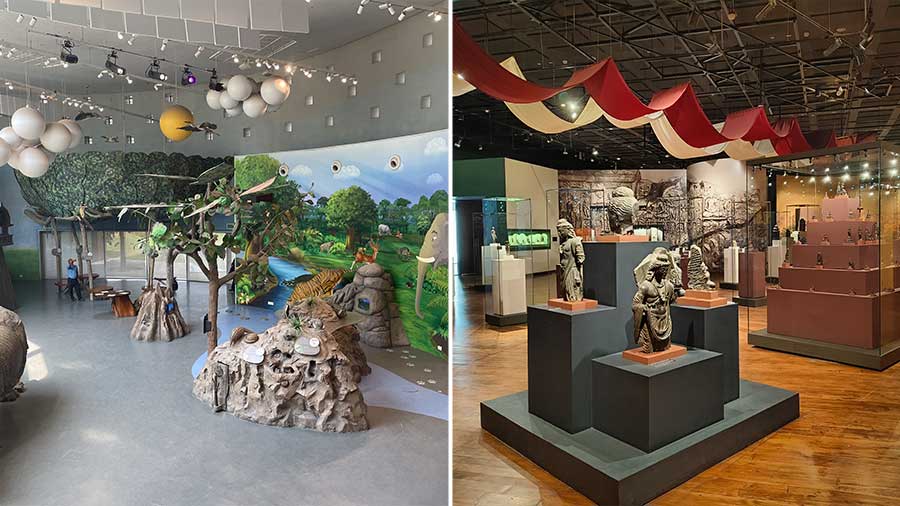
The Children's Gallery and (R) a Buddhism and Jainism exhibit
Bihar Museum’s ‘hands-on’ Children’s Gallery opened in 2015 and has been a runaway success, often at capacity on weekdays. The rest of the museum opened in phases in subsequent years. Its collections – transferred from the older Patna Museum – range from Palaeolithic stone tools to medieval Buddhist sculptures to coins from across the ages. The star of the collection is the exquisite Didarganj Yakshi, who comes with a legendary backstory of her own. The story of Bihari Girmitiyas – the men and women who left for the promise of a better life in the Caribbean and Africa, only to end up as bonded labourers in plantations – unfolds in the Diaspora gallery while Bihar’s traditional arts find place of pride in the stunning Regional Arts Gallery.
Bihar Museum Biennale 2023
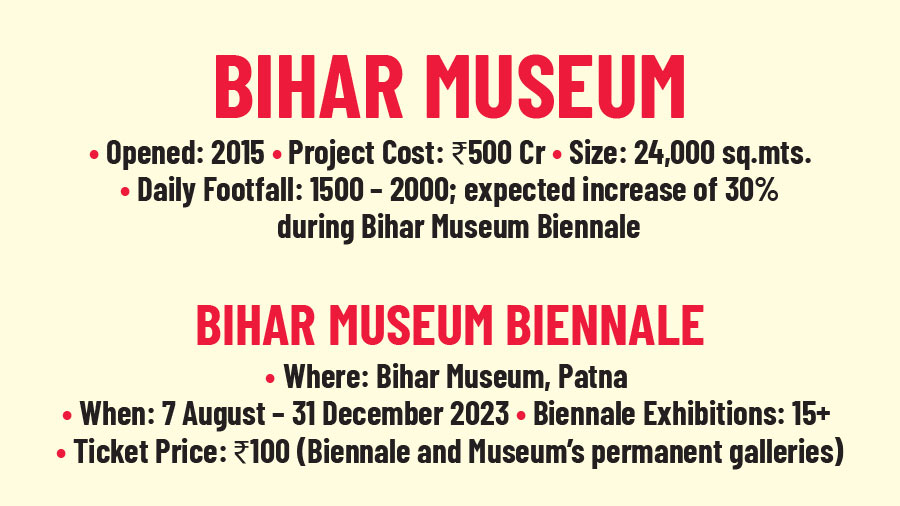
Nine years since its opening, Bihar Museum has steadfastly escaped the mire of bureaucratic red tape and apathy towards maintenance which state museums are notorious for. This is chiefly due to its leadership – the museum is ably led by director Anjani Kumar Singh, retired Chief Secretary of Bihar, who was also the nodal officer for the museum while it was being built. A practical man with little patience for jargon, he is driven by the idea that a museum is only successful if it inspires a sense of ownership among visitors. “I don’t want visitors to come here to ‘learn’ – they can do that elsewhere. I want them to come to our museum to make connections, enjoy themselves and relax. This is their institution.”
The Biennale was conceptualised by Singh in 2020 as a platform for museums to gather, exchange ideas and learnings, and to engage with latest scholarship. The first edition was an online affair due to Covid-19 restrictions. The second edition promises to more than make up for it. Running from August 7 – the Museum’s foundation day – to December 31, the Biennale will have exhibition in two tranches – the first ones opening in August, and the rest in September and October.

‘Together We Art’ - G20 Exhibition at Bihar Museum Biennale
Fortuitously overlapping with India’s presidency of the G20, it will showcase a G20 art exhibition along with exhibitions from nearly 10 countries including Israel, Thailand, Nepal and collaborations with Indian museums, making the second edition a truly international event. Indian talent is not left out – the G20 exhibition includes major Indian artists, and the Biennale includes an exhibition on Padma Shri Award-winning Bihari artists.
Singh is delighted at the interest generated by the Biennale. “We have had museums and embassies approach us as late as one week before opening, expressing an interest in sending exhibitions for the Biennale. Museums are excited at this new avenue for collaboration. We plan to scale up in the next edition.”
Strategising for a Biennale
Pulling together a Biennale is down to proactive internal planning and relationship building with fellow institutions. Chief of Strategy for the Biennale is Batul Raaj Mehta, founder and director of BRMA – a museum planning consultancy based in Mumbai. Batul, in her previous role as director of Lord Cultural Resources, led the planning and exhibition design for the Bihar Museum. Her experience and intuitive understanding of Bihar, the museum and its stakeholders, have served her well in strategising for the Biennale.

The ‘Patna - City of Museums’ exhibition
Batul says, “For the Biennale, BRMA focused on engagement and accessibility through three key interventions: activating under-utilised areas of the museum; new exhibitions and programmes that forge deeper connections between visitors of all demographics, the city and Bihar; and a symposium that brings together pioneering young museum leaders to discuss future trajectories.” Her team conceptualised Patna: City of Museums, which highlights the pioneering museums – old and new – in the city. Another exhibition her team is curating is Suryakal (September 15 – November 30), a showcase of paintings of the sun by artist Udayraj Gadnis, juxtaposed with photographs of Chhath Puja in Bihar.
She continues “We have been mindful of the ecosystem that Bihar Museum exists in and have worked to make connections across participating museums, expertise, local cultural institutions, and audiences. Bihar Museum has the potential and capacity to become a nodal cultural institution in India. The Biennale is a strong step forwards towards realising that goal.”
Bihar Museum Biennale is on at Bihar Museum, Patna, from August 7 – December 31 2023.
Supriya Menon is a museum planner and researcher. She is a partner at BRMA – India’s first homegrown museum planning consultancy.
